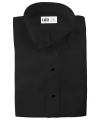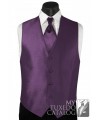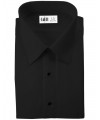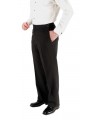Dry-Cleaning
You bring your clothes to the professional cleaners, drop them off with the customer services representative, and a few days later you pick them up looking as good as new. But what happens to your clothing in between?
To many people, professional cleaning is a mysterious process, and you may be surprised to learn that professional cleaning consists of more than one process. In fact, your cleaner might employ more than one technique to give your garments that "like new" appearance.
Wet cleaning or laundering may be used in conjunction ,or instead of, dry-cleaning. Both of these processes involve the professional removal of spots and stains from garments through the use of water and additives as well as using precautions to prevent shrinkage, loss of color and fabric distortion.
Natural fabrics such as wools and silks can shrink, distort and lose color when washed in water, but dry-clean beautifully. Synthetic fibers such as polyester also respond well to dry-cleaning, while they can retain oily stains after washing. More about dry-cleaning...
The Dry-cleaning Process.
Dry-cleaning uses solvents to remove soils and stains from fabric. In fact, the term "dry-cleaning" is misleading; it is called dry-cleaning because the solvent contains little or no water and does not penetrate the fibers as water does. Among the advantages of dry-cleaning is its ability to dissolve grease and oils in a way that water cannot.
Dry-cleaning helps return garments to a "like new" condition using precautions to prevent shrinkage, loss of color and fabric distortion.
The dry-cleaning process begins with the pretreatment of of spots and stains using special cleaning agents. The garments are then loaded into a machine resembling an oversized front-loading home washer. It produces similar mechanical action to loosen embedded dirt. Throughout the cleaning process, the solvent is filtered or distilled to ensure its clarity.
The solvent used by Abe's Cleaners is a petroleum/hydrocarbon solvent. It is completely non-flammable, none combustible, of relatively low toxicity and can be efficiently reused and recycled.
Professional Cleaning Steps.
Professional cleaning involves many different operations, all performed by skilled people and designed to give your garments a fresh and clean appearance. Procedures include:
1. Checking the labels for adequate care instructions and fabric content.
2. Classifying the garment according to fabric type, color and degree of soiling.
3. Removing spots and stains using special equipment, special stain removal agents and water.
4. Dry-cleaning, wet-cleaning or laundering, only id so labeled.
5. Reapplying any sizing, water repellency and other finishes when necessary and possible.
6. Finishing the garment on professional pressing equipment to restore its original shape and appearance.
7. Replacing missing or damaged buttons and performing minor repairs where necessary.
8. Packaging the garment neatly in a protective wrapper.
Along with these basic procedure, Abe's Cleaner's offers additional services such as cleaning suede's and leathers, drapery cleaning, smoke removal, pillow cleaning, wedding gown preservation, alterations and repairs.
How You Can Help.
Here are some garment care tips that will help you get the most from your dry cleaning dollar:
- Bring a garment in for professional cleaning as soon as possible after the staining occurs.
- Discuss any stains with your cleaner. Be especially sure to point out and light colored or invisible spills, so that we can treat the stain prior to putting the garment through the dry-cleaning process.
- Keep perfumes, lotions, deodorants, antiperspirants and other toiletries from coming into contact with your clothes. These products likely contain alcohol, which can effect some dyes. Allow them to dry before you dries.
- Protect your garments from excessive perspiration (especially silks). Perspiration left on fabrics too long can cause many dyes to discolor.
- Have matching items cleaned together so that any color loss will be uniform and the pieces will still match.
- Protect your garments form prolonged exposure to direct sunlight or strong artificial light. Even normal lighting can effect some dyes.
-
Don't press stained or soiled clothes. The heat may set some stains.
Even the best cleaners cannot remove all stains, reverse worn or torn areas, prevent some colors from fading or correct poor home spot removal procedures. But, with a little bit of prevention, you can do your part to help ensure satisfactory dry-cleaning and a longer life for your garments
There are no products to list in this category.





















